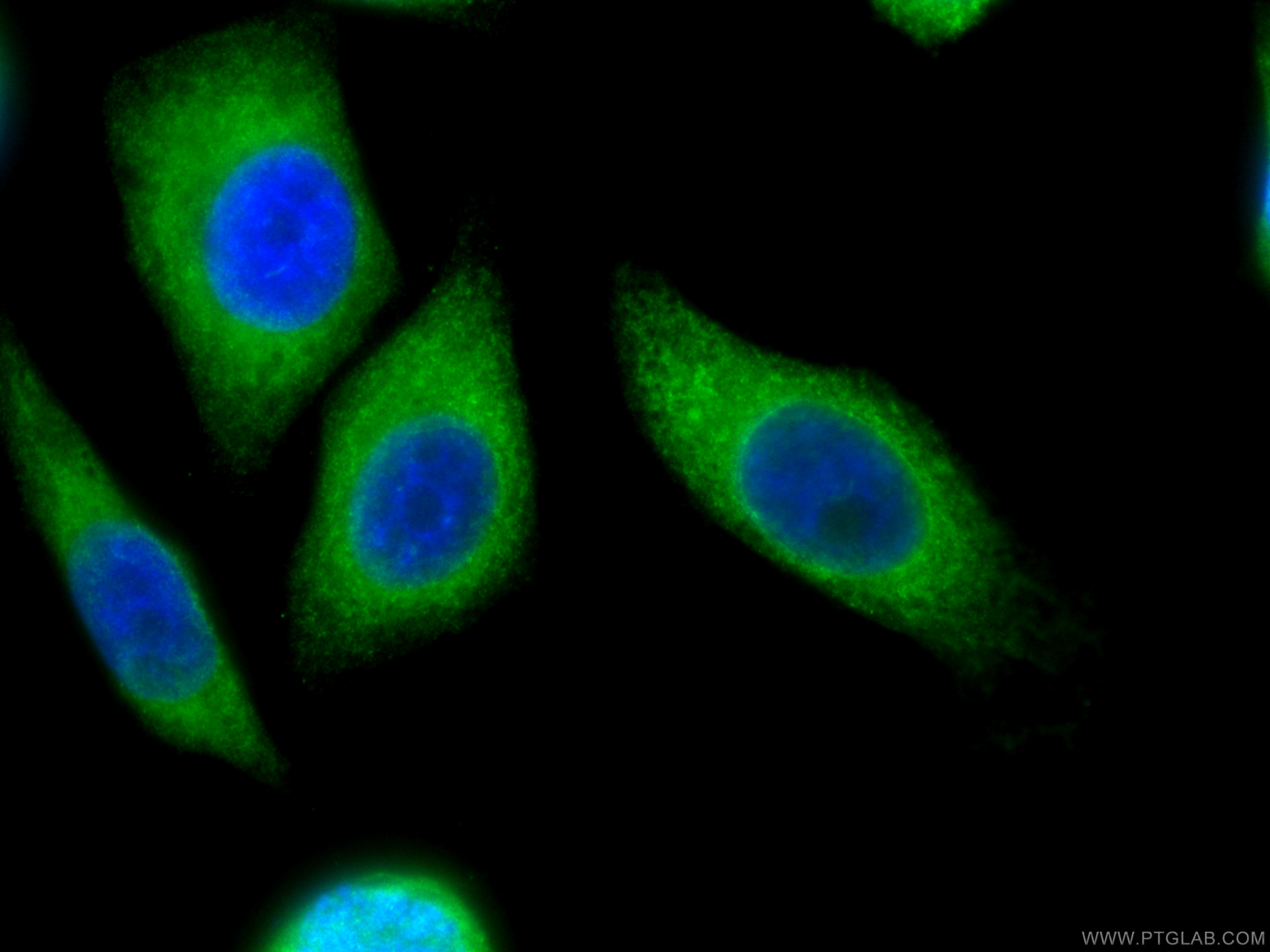验证数据展示
经过测试的应用
| Positive IF/ICC detected in | HepG2 cells |
推荐稀释比
| 应用 | 推荐稀释比 |
|---|---|
| Immunofluorescence (IF)/ICC | IF/ICC : 1:50-1:500 |
| It is recommended that this reagent should be titrated in each testing system to obtain optimal results. | |
| Sample-dependent, Check data in validation data gallery. | |
产品信息
CL488-66903 targets Calnexin in IF/ICC applications and shows reactivity with Human, mouse, rat samples.
| 经测试应用 | IF/ICC Application Description |
| 经测试反应性 | Human, mouse, rat |
| 免疫原 |
CatNo: Ag25535 Product name: Recombinant human Calnexin protein Source: e coli.-derived, PET28a Tag: 6*His Domain: 1-273 aa of BC003552 Sequence: MEGKWLLCMLLVLGTAIVEAHDGHDDDVIDIEDDLDDVIEEVEDSKPDTTAPPSSPKVTYKAPVPTGEVYFADSFDRGTLSGWILSKAKKDDTDDEIAKYDGKWEVEEMKESKLPGDKGLVLMSRAKHHAISAKLNKPFLFDTKPLIVQYEVNFQNGIECGGAYVKLLSKTPELNLDQFHDKTPYTIMFGPDKCGEDYKLHFIFRHKNPKTGIYEEKHAKRPDADLKTYFTDKKTHLYTLILNPDNSFEILVDQSVVNSGNLLNDMTPPVNPS 种属同源性预测 |
| 宿主/亚型 | Mouse / IgG1 |
| 抗体类别 | Monoclonal |
| 产品类型 | Antibody |
| 全称 | calnexin |
| 别名 | calnexin, CANX, CNX, FLJ26570, IP90, P90 |
| 计算分子量 | 90 kDa |
| 观测分子量 | 90 kDa |
| GenBank蛋白编号 | BC003552 |
| 基因名称 | Calnexin |
| Gene ID (NCBI) | 821 |
| RRID | AB_2883391 |
| 偶联类型 | CoraLite® Plus 488 Fluorescent Dye |
| 最大激发/发射波长 | 493 nm / 522 nm |
| 形式 | Liquid |
| 纯化方式 | Protein G purification |
| UNIPROT ID | P27824 |
| 储存缓冲液 | PBS with 50% glycerol, 0.05% Proclin300, 0.5% BSA, pH 7.3. |
| 储存条件 | Store at -20°C. Avoid exposure to light. Stable for one year after shipment. Aliquoting is unnecessary for -20oC storage. |
背景介绍
Calnexin is a molecular chaperone that resides in the endoplasmic reticulum (ER) and participates in the folding and assembly of newly synthesized proteins. Calnexin is highly abundant in ER and is frequently used as an ER marker.
实验方案
| Product Specific Protocols | |
|---|---|
| IF protocol for CL Plus 488 Calnexin antibody CL488-66903 | Download protocol |
| Standard Protocols | |
|---|---|
| Click here to view our Standard Protocols |


